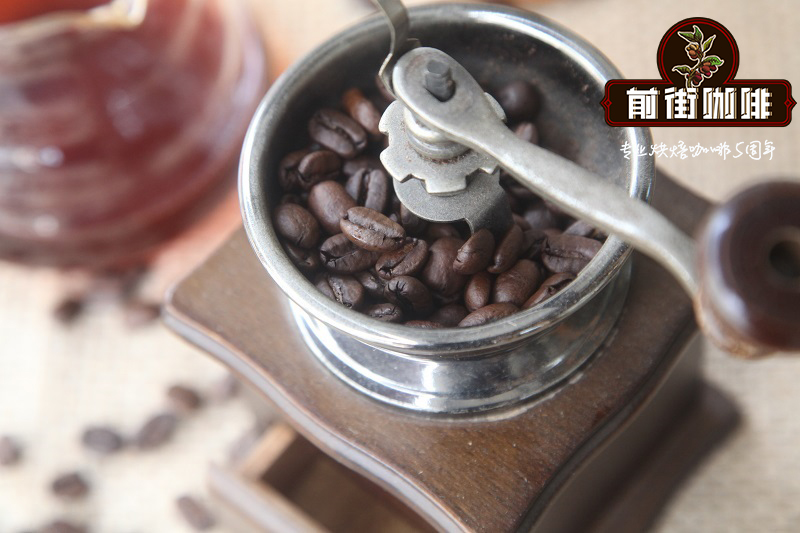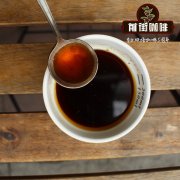What are the flavor and taste characteristics of multi-tower Dota boutique coffee in Tarazhu, Costa Rica?

Professional coffee knowledge exchange more coffee bean information please follow the coffee workshop (Wechat official account cafe_style)
What are the flavor and taste characteristics of multi-tower Dota boutique coffee in Tarazhu, Costa Rica?
The first country in Central America to grow coffee; government support for development
Coffee began to appear in Costa Rica in 1729, when it was introduced from Cuba. This made Costa Rica the first country in Central America to grow coffee and the first to grow coffee because of its commercial value. Then, after Costa Rica became independent from Spain in 1821, the local government began to support the coffee industry with a series of policies. At that time, it was more than a hundred years after coffee was introduced into Costa Rica, but about 70,000 coffee trees have been planted, which shows the speed of its development. The local government's policies on the coffee industry include:
In 1825, the Costa Rican government implemented a tax exemption policy. In 1832, the local government promulgated a law that "there is land for growing coffee", meaning that coffee farmers can own the land directly if they grow coffee on any land that is not occupied. As soon as this example comes out, it encourages many people to grow coffee and promote the development of coffee. (it can also indirectly explain why most of Costa Rican coffee comes from private estates.)
It is conceivable that when there are more products, the quality will become different, affecting competitiveness. So in order to improve the quality and value of coffee, at the beginning of the 20th century, the government enacted legislation that coffee farms or plantations in Costa Rica could only grow coffee from Arabica, so as to enhance their competitiveness. This helps to understand why Costa Rican coffee is now so superior: coffee from Costa Rica is all Arabica, and we can never find Robusta.
Subsequently, in 1948, the Costa Rican government established an exclusive coffee department (that is, the Costa Rican coffee industry company ICAFE:Institutodel Caf é de Costa Rica. It has been taken over by the official Coffee Committee Oficinadel Caf é), mainly coaching the manor from planting, post-processing to the improvement of the sales system. The place is also very careful in handling coffee for export. Among the exported coffee, coffee beans that are considered to be of substandard quality will be colored by blue plant dyes and then returned to China for sale. Today, about 1/3 of Costa Rica's population is engaged in coffee or coffee-related industries, and per capita coffee consumption is twice that of Italy or the United States. From various policies, we can see that the government's support for the coffee industry has indirectly made Costa Rica's coffee better and more competitive than other countries.
A single coffee from Dota, Tarrazu, Costa Rica. Tarazhu is one of Costa Rica's world-famous coffee producing areas, located about two hours south of the Costa Rican capital SanJose. Because Tarazhu has a very high altitude, which makes her coffee rich and pleasant, and makes her a very important growing area in Costa Rica.
On the other hand, Dota is the top producing area in Tarazhu region. In many towers, the farmland is located at an average altitude of 1200-1700 meters above sea level, with ample annual rainfall and long sunshine (an average of 2150 hours per year), so sun-treated coffee beans have excellent quality: the beans are hard and full, smooth to taste and full of flavor.
Up to now, Costa Rica's coffee industry is one of the well-organized industries in the world, with a yield of 1700 kilograms per hectare. With a population of 3.5 million, the country has as many as 400m coffee trees, and coffee exports account for 25 per cent of total exports. In Costa Rica, where coffee is produced, coffee of all grades and types also accounts for 1/3 of global consumption. Thus it can be seen that the quality of her coffee gives her a place in the global coffee market, and being loved by people, the history of the development of the coffee industry cannot be ignored.
Dota belongs to an independent small producing area within Tarrazu and is a geographical watershed on the Pacific side of Costa Rica, so the dry and wet season is quite equal to next year, with rainfall of 2000 mm, average annual temperature of 19 ℃, sunshine and annual relative humidity of 84%. These conditions are really suitable for growing high-quality coffee, coupled with the average altitude of 1200M--1800M, they all belong to high-altitude very hard beans. The acidity of the coffee is usually bright and the Body is good, and has a charming aroma. The selected Dota Tarrazu honey treatment has camellia aroma, sipping caramel and syrup with high sweetness, Body is thicker and tastes like classic honey treatment.
Coffee Origin: Costa Rica Dota Tarrazu / altitude: 1200M--1800M / Coffee Grade: SHB EP / Coffee Variety: Catura, Catuai others / Post-treatment: Honey Processing honey treatment
Qianjie recommended cooking parameters:
Hand punch: V60 filter cup small Fuji R440 grinding 3.5, water temperature about 90 degrees
The recommended grinding degree of normal pressure is 4 and the water temperature is 90 ℃.
The recommended siphon grinding degree is 4, and the water temperature is 90 ℃ ~ 91 ℃.
The pressure grinding degree of Philharmonic is recommended to be 3.5, and the water temperature is 90 ℃.
Important Notice :
前街咖啡 FrontStreet Coffee has moved to new addredd:
FrontStreet Coffee Address: 315,Donghua East Road,GuangZhou
Tel:020 38364473
- Prev

Introduction of Indonesian coffee producing area Sulawesi coffee flavor characteristics of Sulawesi coffee hand brewing
Professional coffee knowledge exchange more coffee bean information please follow the coffee workshop (Wechat official account cafe_style) Indonesia is the world's largest archipelago country, as early as the 18th century Dutch rule introduced Arabica tree coffee planting, the main producing areas are located in Sumatra, Java and Sulawesi Island, the production of Mantenin deep low acidity rich taste, let people call
- Next

In addition to curry, there is also coffee in India. Indian coffee features Indian coffee Malaba.
Professional coffee knowledge exchange more coffee bean information please follow the coffee workshop (Wechat official account cafe_style) Coffee was brought into the establishment of the first coffee farm by pilgrims as early as the 16th century. You may not imagine that India produces much more coffee than Ethiopia and any Central American country. There are 900000 hectares of land to grow coffee beans, and there are about 140000 in India.
Related
- Detailed explanation of Jadeite planting Land in Panamanian Jadeite Manor introduction to the grading system of Jadeite competitive bidding, Red bid, Green bid and Rose Summer
- Story of Coffee planting in Brenka region of Costa Rica Stonehenge Manor anaerobic heavy honey treatment of flavor mouth
- What's on the barrel of Blue Mountain Coffee beans?
- Can American coffee also pull flowers? How to use hot American style to pull out a good-looking pattern?
- Can you make a cold extract with coffee beans? What is the right proportion for cold-extracted coffee formula?
- Indonesian PWN Gold Mandrine Coffee Origin Features Flavor How to Chong? Mandolin coffee is American.
- A brief introduction to the flavor characteristics of Brazilian yellow bourbon coffee beans
- What is the effect of different water quality on the flavor of cold-extracted coffee? What kind of water is best for brewing coffee?
- Why do you think of Rose Summer whenever you mention Panamanian coffee?
- Introduction to the characteristics of authentic blue mountain coffee bean producing areas? What is the CIB Coffee Authority in Jamaica?

